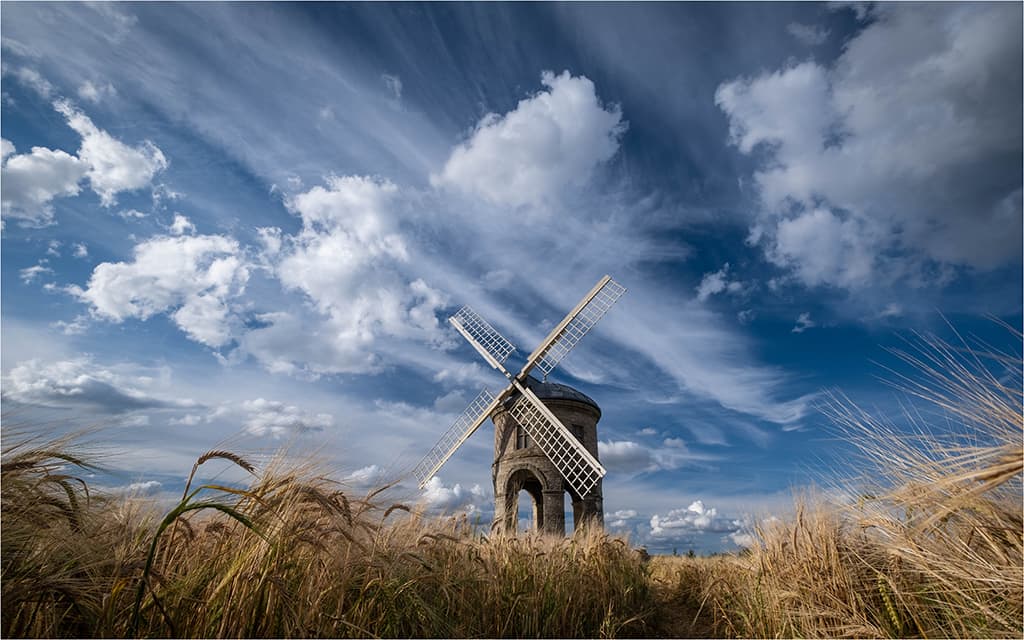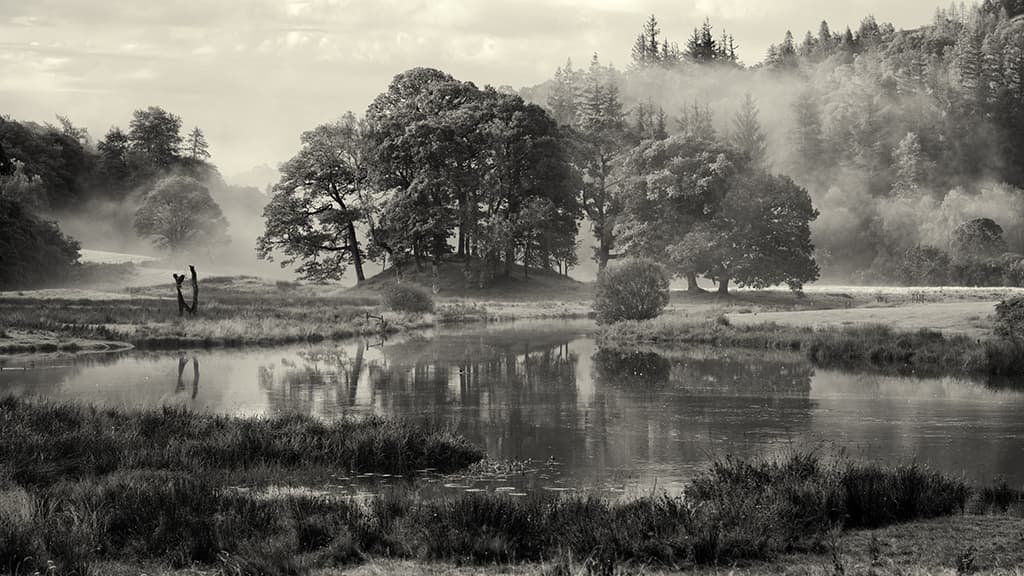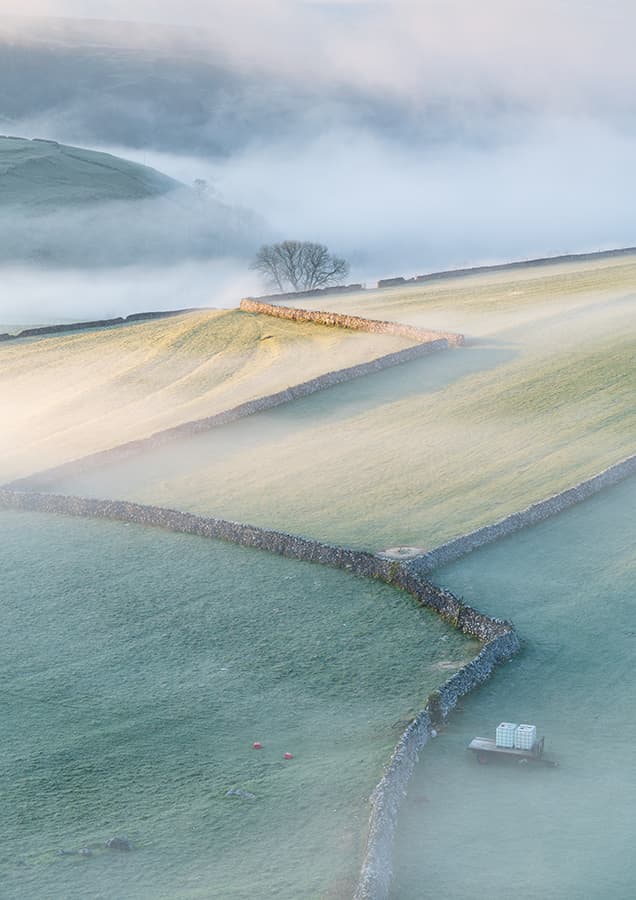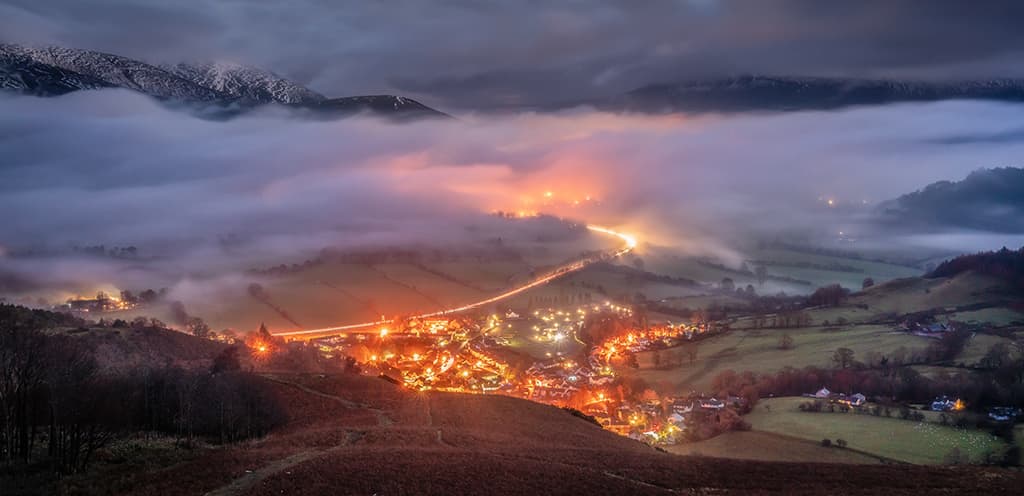Winners and finalists of Landscape Photographer of the Year 2021 (LPOTY) share their top tips for award-winning landscape photographs
Now in its 14th year, Landscape Photographer of the Year 2021 (LPOTY) once more showcases and celebrates the richly diverse landscape of the UK. From dramatic storms and raging seas to the quieter joys of misty woodlands and close-ups of nature’s fascinating details, the winning photographs in this year’s competition not only display the talent of their creators but also inspire visitors to explore and discover the wonders of Britain’s countryside.
With a beautiful shot, ‘Morning at Countryside’, taken in West Sussex, Mara Leite scoops the prestigious title of Overall Winner and receives the £10,000 top prize in this year’s competition. Charlie Waite, the awards founder says, ‘With the glorious ring lighting and a splash of golden light at the top, there is a sense of security and protection as much as secrecy that emerges from this delicate photograph where we are beckoned to go forward.’
The Young Landscape Photographer of the Year title goes to Evie Easterbrook for her image ‘Joining the Queue’ taken in Southwold Harbour. Charlie Waite says, ‘The humour in this photograph is wonderfully conveyed and seems reminiscent of an earlier time, perhaps the fifties, and embraces a piece of classic Britain.’
This year there were seven categories and special awards: Classic View, Your View, Urban Life, Black and White, The Network Rail Award for Lines in the Landscape, The Sunday Times Magazine Award for Historic Britain and the Light and Land Award for Landscapes at Night, as well as Young LPOTY.
An exhibition of shortlisted and winning LPOTY 2021 entries will premiere at London Bridge on 15 November and run until 9 January 2022. A tour of the UK will follow. To see all the winners and awarded entries from this year’s Landscape Photographer of the Year competition, visit www.lpoty.co.uk.

Mara Leite, Morning at Countryside
LPOTY 2021 Overall Winner
www.maraleitephotography.com, www.facebook.com/maralphoto, Instagram @maralphoto, Twitter @TheMNVL
‘Mill Lane is a famous footpath in Halnaker, West Sussex. I was looking for a different composition when I decided to turn the other way and saw this beautiful sight. I love the gate in the background and how the morning light is hitting the leaves and softly entering the tunnel.’
Mara’s top tips
1. Have an idea of the time of day/year you want to photograph your subject and monitor the weather. I found social media a good tool for tracking the progression of autumn.
2. Light is important; if you want to master exposure, learn how to read your camera’s histogram.
3. Don’t overdo it in post-processing. Make subtle changes that add drama and simultaneously reflect your photography style and other work.
Evie Easterbrook, Joining the Queue
LPOTY 2021 Overall Youth Winner
‘I took this photograph at Southwold harbour in Suffolk. I was surprised to see the gulls forming such an orderly queue!’
Evie’s top tips
1. Always have your camera nearby. You can never be certain when something interesting will come into view or for how long the subject matter will be at its best.
2. Be patient. It is always worth taking the time to ensure you have the right composition. Small adjustments in angles, composition or lighting can make a big difference.
3. You don’t have to be an expert. Although there is always more to learn, limited technical knowledge need not hold you back – just enjoy your photography and don’t worry about making mistakes.
Philip George, Chesterton Windmill
Winner, Classic View
Flickr @PhilipGeorge
‘I was returning from Birmingham to Southampton and decided to take a detour to Chesterton Windmill as the skies looked good. I have been there quite a few times before in the hope of getting a good sky. This was taken quite late in the afternoon. There were quite a few people at the windmill, so I tried to find an angle to eliminate the people from the pictures.
I finally found a low viewpoint in the barley field, with just a hint of a leading line to the windmill. I used a polarising filter to deepen the blue skies and bring out the wonderful clouds.’
Philip’s top tips
1. Visit a location frequently and spend time looking at it from different angles. You don’t always want the same image as everyone else.
2. Get out and about and find locations for yourself. Make a point of visiting with the intention of taking a photograph.
3. I love to look for the right sky overhead. Sunrise, or sunset, from dawn to dusk, there is plenty of changeable weather that makes the British Isles such a great place to take photographs.
Miles Middlebrook, Daybreak beside the River Brathay
Winner, Black and White
www.buildingpanoramics.com, 500px @Miles Middlebrook
‘I was staying at one of my favourite places, Skelwith Bridge which is situated beside the rather beautiful River Brathay. Thanks to my dog for getting me up early one morning, we were greeted by a magical scene as the first light caught the river, lifting mist from the surface and hanging among the trees.’
Miles’s top tips
1. Visualise the kind of images you want to capture and then work towards making that happen.
2. I avoid the use of wideangle lenses because often in my case I find the main focal point of the image can be too small and insignificant in the frame.
3. Have someone whose judgement you trust to critique your shots in order to get the most out of your photography. In my case I have my brother, Mark, with whom I share Building Panoramics.
James Whitesmith, Malham Zig Zag
Highly Commended, Your View
www.jameswhitesmith.co.uk, Instagram @james.whitesmith
‘Traditional dry stone walls zig zag across the fields beneath Malham Lings in the Yorkshire Dales, as the rising sun begins to light the scene. I arrived on location well before sunrise and the entire valley was filled with thick fog, but as the minutes ticked by it began to shift and retreat.
This particular scene caught my eye and fortunately the swirling mist revealed the copse at the decisive moment with the first direct light washing over the landscape.’
James’s top tips
1. When you arrive at a location don’t just make a beeline for the obvious subject and composition. Take time to explore and experiment with different focal lengths and camera position.
2. Sometimes a scene can be transformed in an instant, particularly in changeable weather or mist. Keep tweaking your composition as the light changes.
Tommaso Carrara, Piccadilly Circus
Runner up, Urban View
www.gettons.org, Instagram @gettons
‘The silhouette of a man smoking a cigarette catches my attention as a double-decker cuts through the road with the advertising boards on the back. This trilogy made of human, adverts and transportation is, to me, amongst the essence of this city.’
Tommaso’s top tips
1. Pre-visualise the composition and look for an appropriate background. This is normally the less dynamic part of the image and is unlikely to change.
2. Once you’re happy with the background, think about all those elements that could add to the frame and whether they are static or not. Once all those elements come together take multiple shots, as you never know what might happen next.
Jason Hudson, Braithwaite
Commended, Landscapes at Night
Twitter @Edenphotograph1, Instagram @jasonhudson142
‘A pre-dawn climb up Grisdale Pike in the Lake District was the setting for this shot. I noticed the light trails through the mist and thought it would make a compelling image.’
Jason’s top tips
1. If you want dramatic photos go out in dramatic weather but keep an eye out for storm warnings. Make sure both you and your camera are protected from the elements.
2. If you see nice light make a note of the time and location. The likelihood is that conditions may repeat over the following days. Head out and search for compositions and you may get the shot you are after.
3. Observe the weather and try to predict changes in the rain and light. It is possible to anticipate rainbow positions in advance of them appearing so start looking for compositions before they appear.
Arthur Homewood, Christmas Eve at Saunton
Winner, Black and White Youth
Instagram @rt_hwd
‘The fog is my favourite condition to shoot in due to the potential for minimalistic compositions and the way the background appears to go on indefinitely. On Christmas Eve 2018 my family and I went to Saunton Sands for a walk but when we arrived the foggy conditions were unlike anything that I had seen before on the beach.
I moved toward the coastline and after a short time these children came running up to play in the shallow water. They made for perfect subjects as they were extremely energetic, running on excitement for the following day.’
Arthur’s top tips
1. Revisit the same locations to get familiar with the conditions that work best.
2. Don’t be afraid to shoot candid photos of people despite it being a landscape; they give a great sense of scale.
Tomasz Rojek, Dunnottar Castle
Commended, Historic Britain
Facebook/Instagram @tomaszrojekphotography, www.tomaszrojek.pl
‘The photo was taken during my trip to Scotland in May 2019. This is Dunnottar Castle during the sunrise. The man in the upper right corner shows the scale of the landscape.’
Tomasz’s top tips
1. Landscape photography involves a lot of planning. You should have a clear idea of where you are going, and at what time of the day you will be able to capture the best light.
2. The best light for landscape photography is usually during sunset and sunrise and about one hour after. Make sure you arrive early to find your shooting spot, set up your camera and compose your scene.
3. Be patient and persistent. You will come back from many trips without interesting photos but this should not discourage you from further expeditions.
Kathy Medcalf, Convoy
Commended, Lines in the Landscape
www.fineart-landscapes.co.uk, Instagram @fineartlandscapes
‘Aerial view of coal trains in a train yard. I spotted this location on Google Earth and decided to do some research into it. I visited on a day when the rail was closed and I hoped the trains would be in the yard. The light and time of day played a big part too as I didn’t want shadow to overwhelm the main focus.’
Kathy’s top tips
1. Always research the area that you are planning on photographing. Use Google Earth to find good viewpoints and beautiful areas of interest.
2. Light is an important factor when it comes to shooting your subject. Shooting at ‘golden hour’ gives you dramatic contrast with shadows that help to bring out detail.
3. Look for unique perspectives. Be creative and experiment with different viewpoints.
Landscape Photographer of the Year Collection 14 is published on 28 October by Ilex. Hardback. £26.
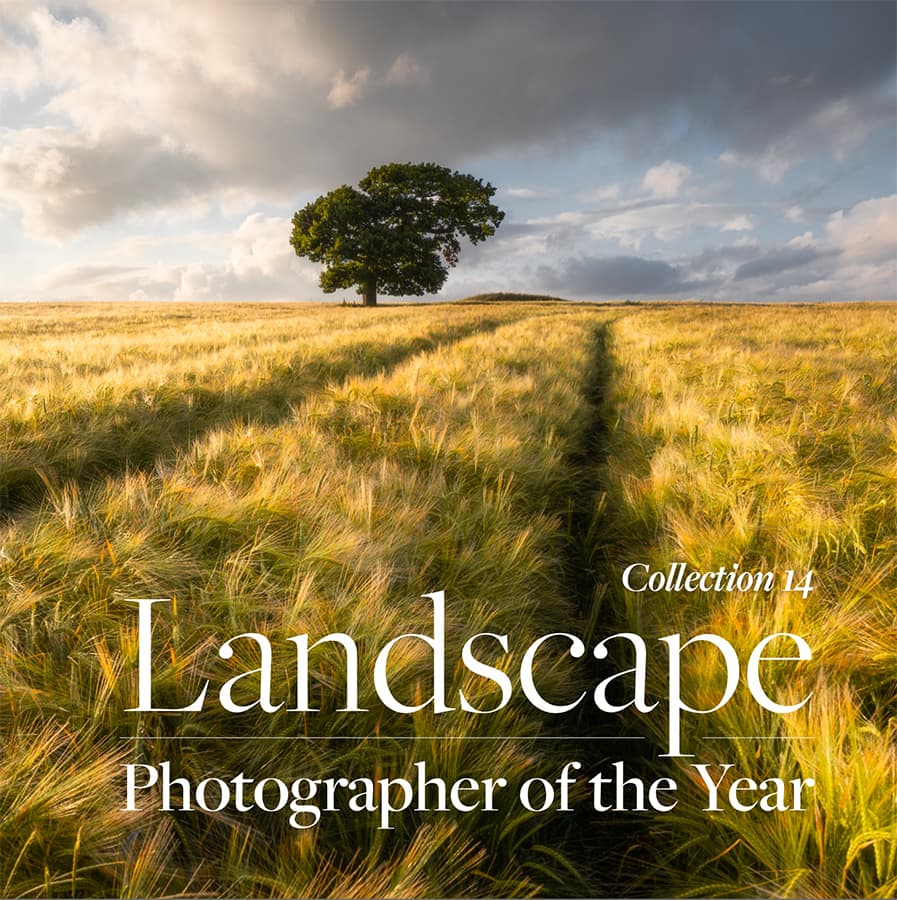
Further reading




